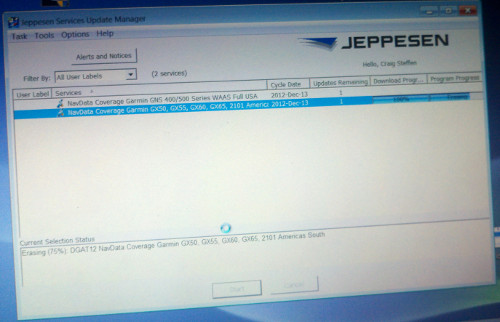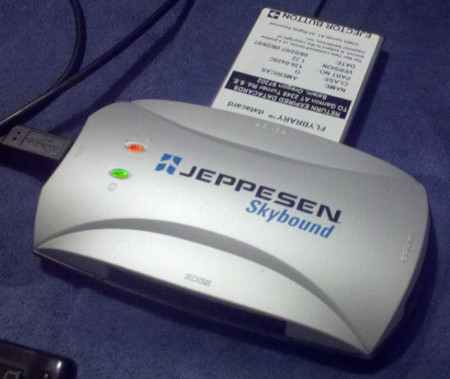The new plane has two GPS navigation units. I don't think I would have made that choice in configuring it, but it will be fine for the moment.
GPS units used for IFR flight must have current navigational and waypoint and airport information to be legal. The unit itself lives in the panel in the airplane, but the navigation data lives on a flash-memory card that sits in a socket in the front of the unit that's removable.
The information is updated every 28 days, so you need to remove the card from each unit and program it with the updated information. Most people have two of each card, and swap them out every time the information is updated. The seller of my airplane had two cards for each GPS as well, and a programming unit that will interface with either type.
There's a company called Jeppesen that packages the information into a
form that the GPSs can understand. I downloaded their software and
bought one update for each of the two GPS units in the airplane:

The older of the GPS units is an Apollo GX-60. It was designed by a
company called "II Morrow" which has since been absorbed by Garmin.
This one is an old-school unit; its screen is monochrome and it has an
older-style interface. Its memory card is a PCMCIA memory card.
PCMCIA is a expansion bus that used to be used by laptops a lot.
Here's the Jeppesen programmer writing data to the GX-60 card:

The other GPS is a Garmin 430W, a relatively modern GPS unit (6 years
old or so). It has a multi-color screen and a relatively modern
interface. The data card for the Garmin units is a proprietary card
that's only available from them.
